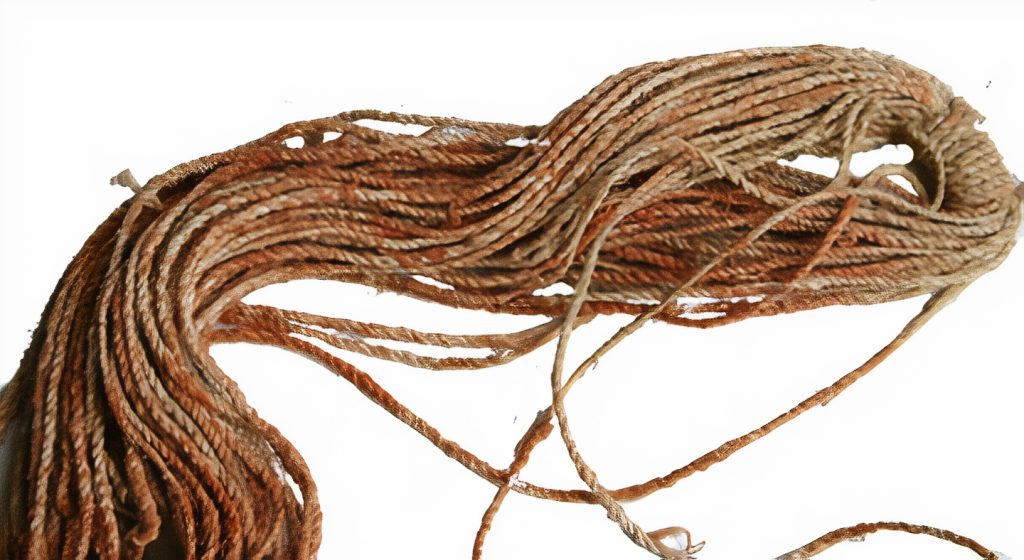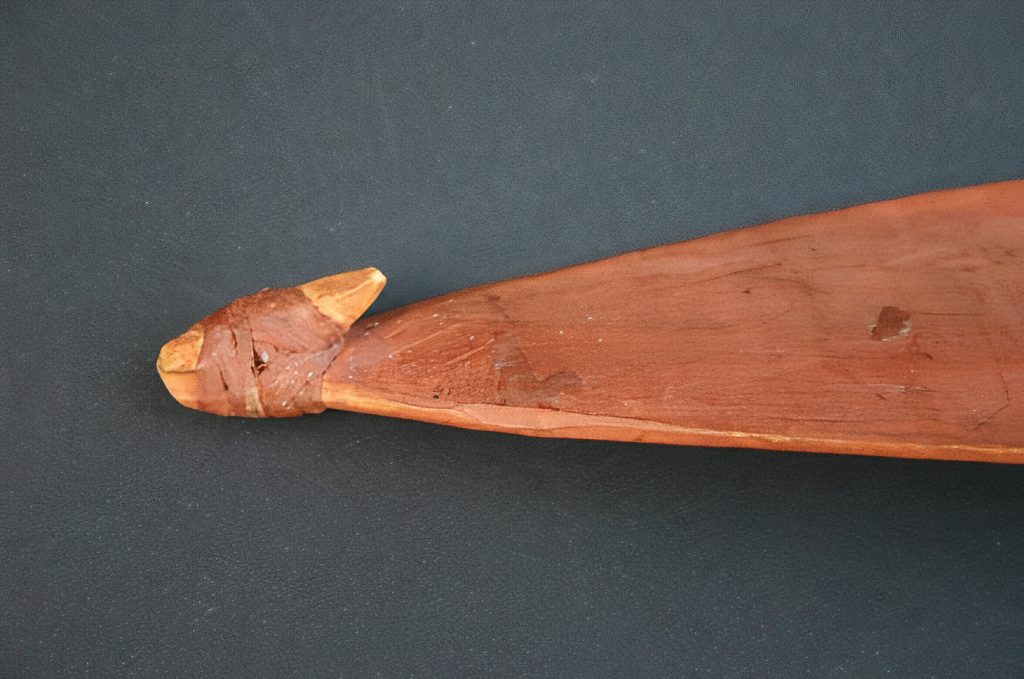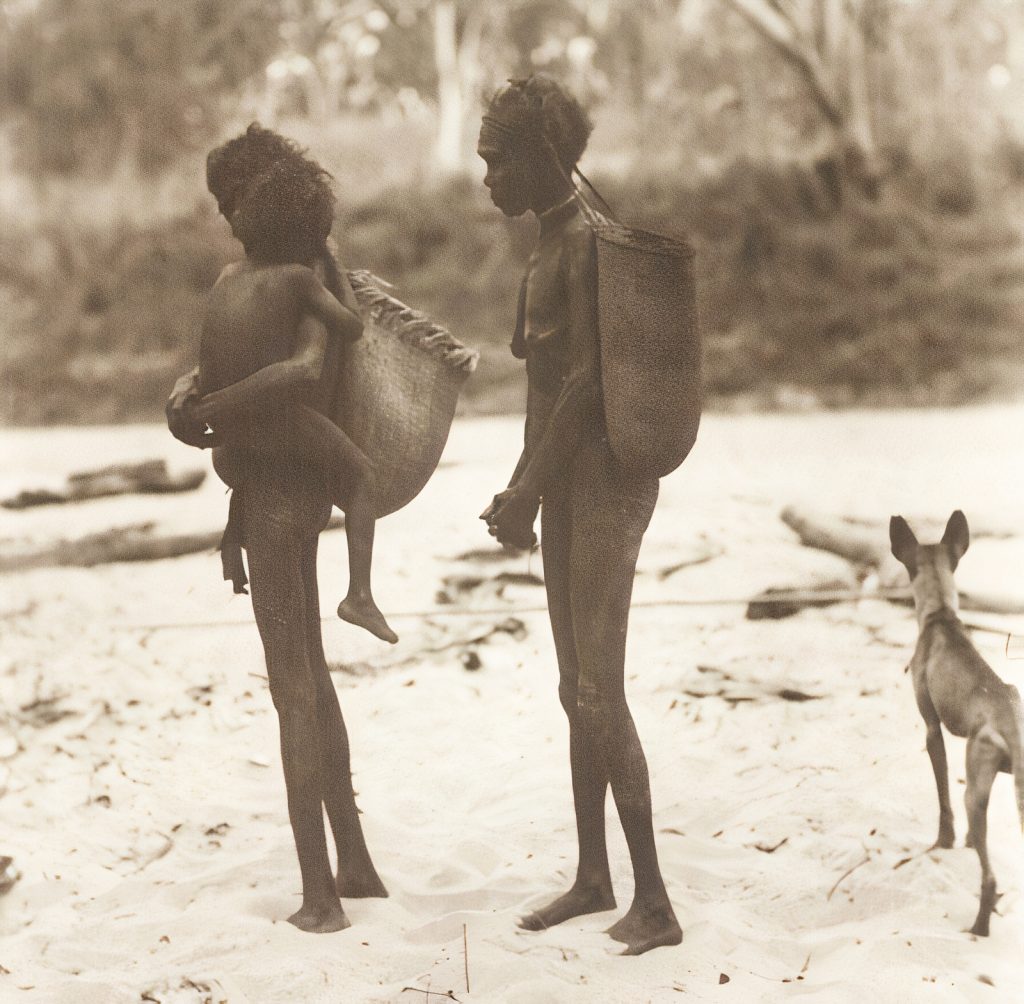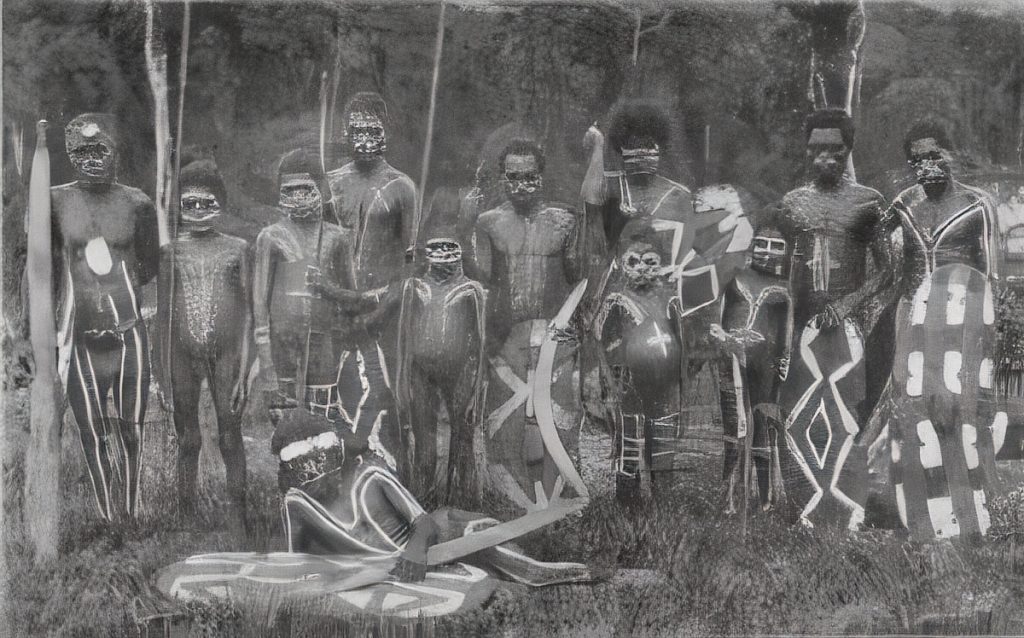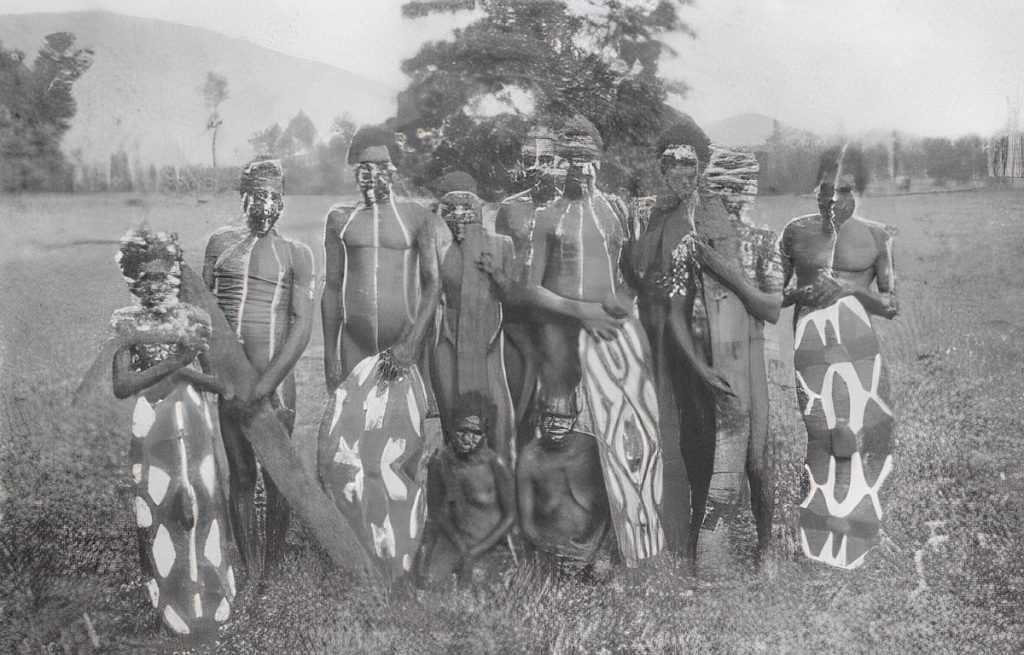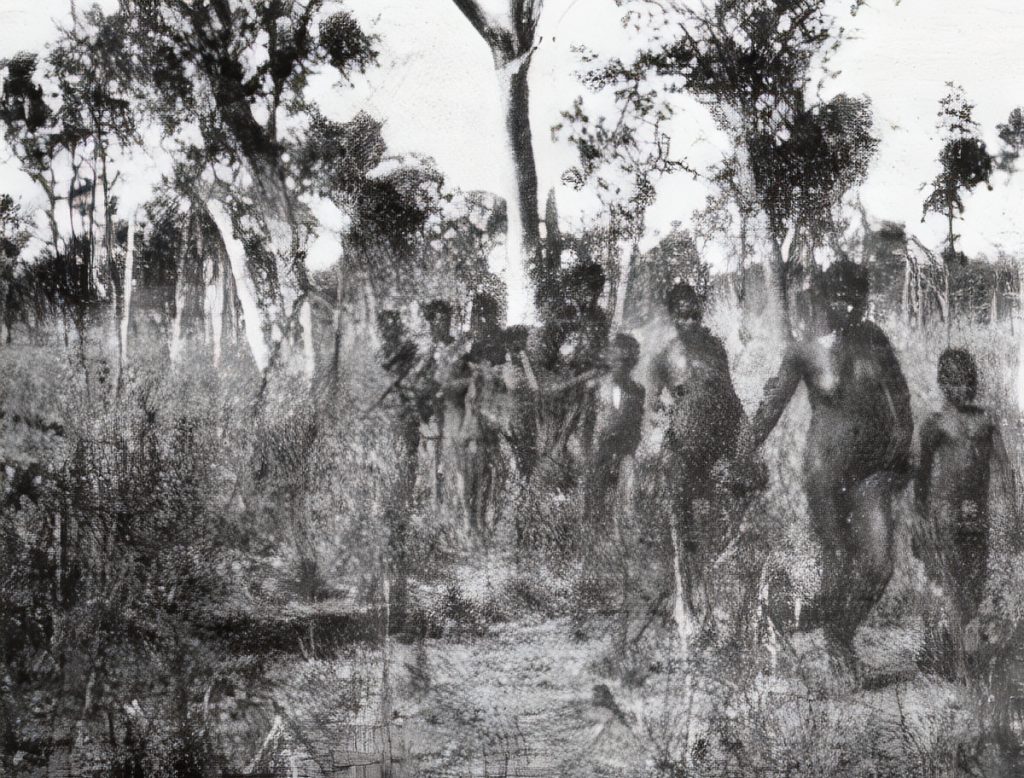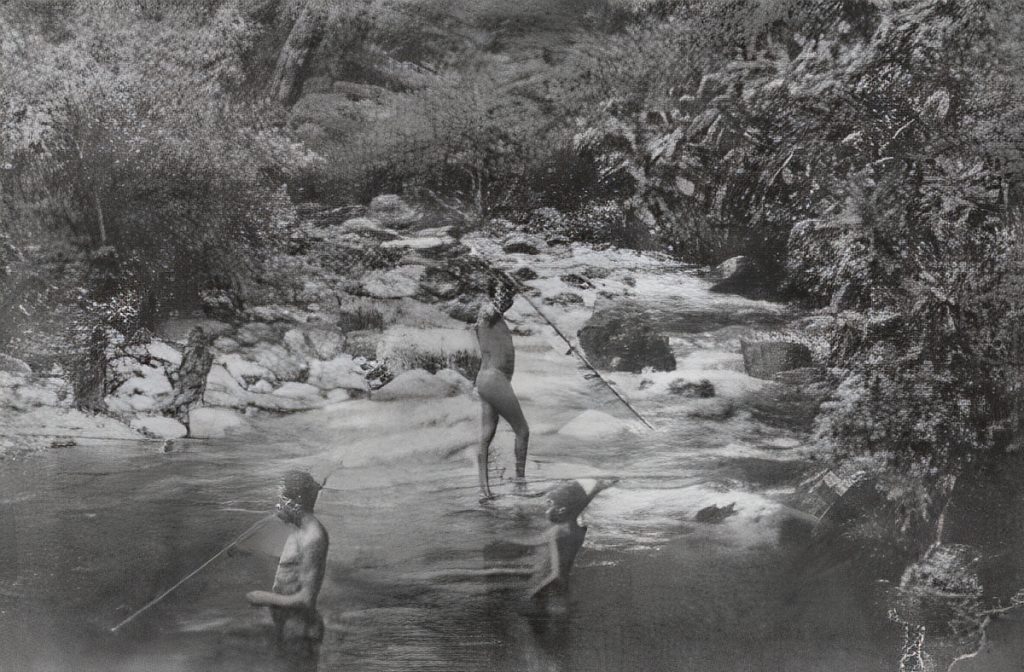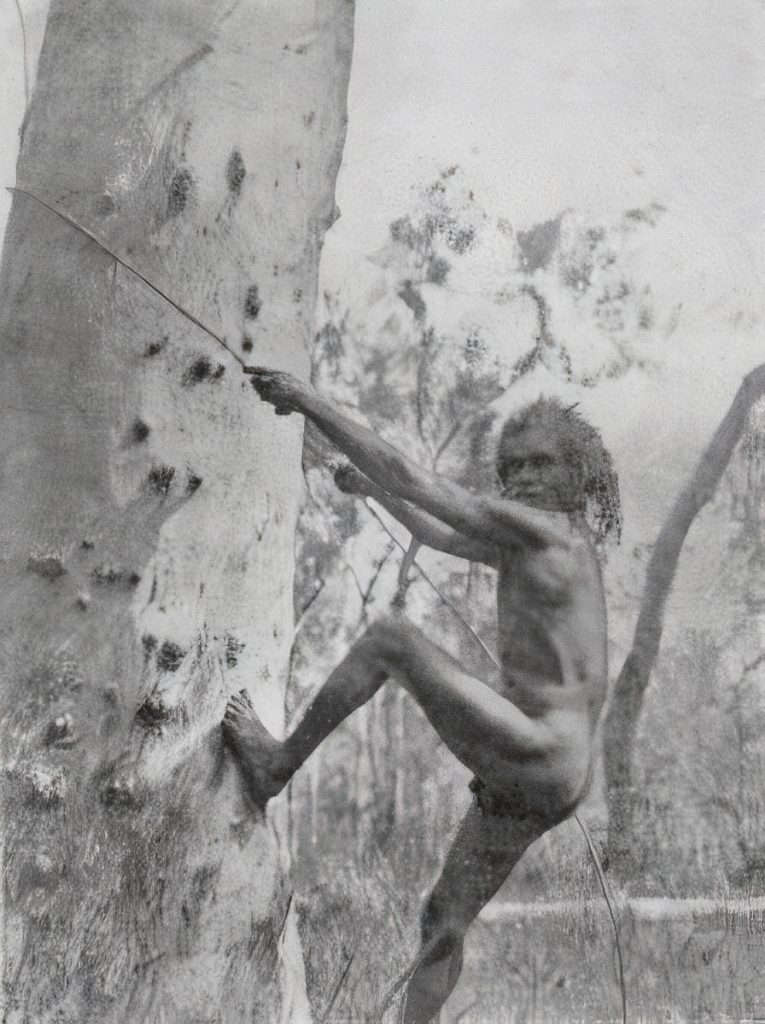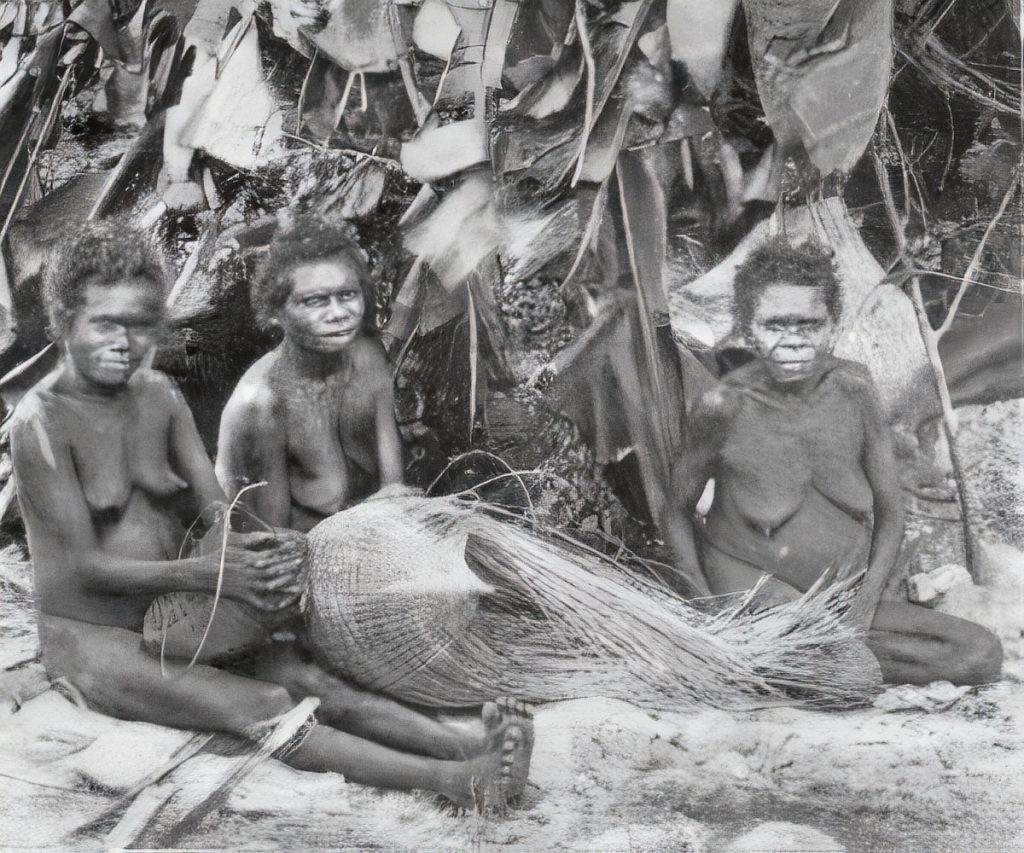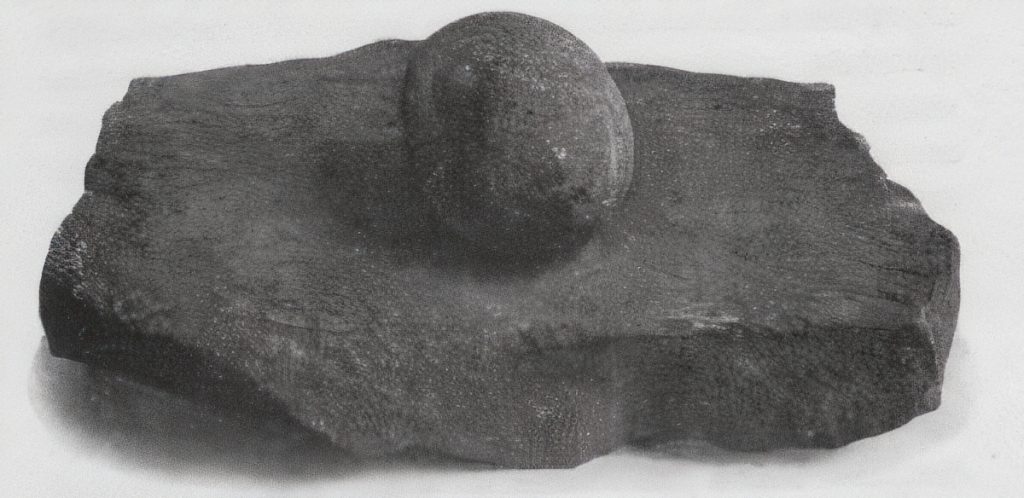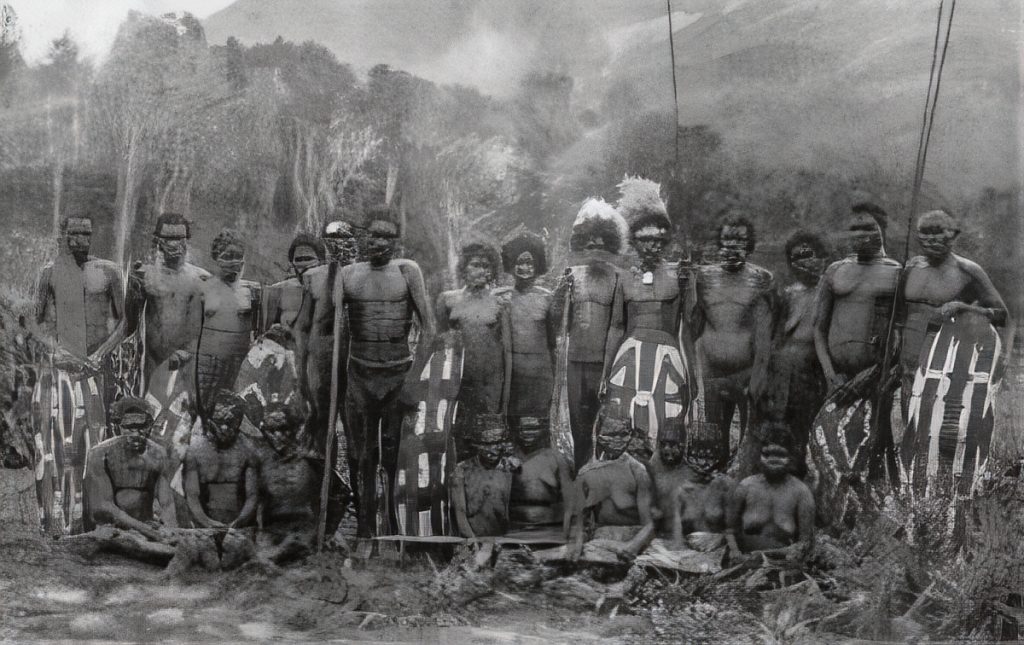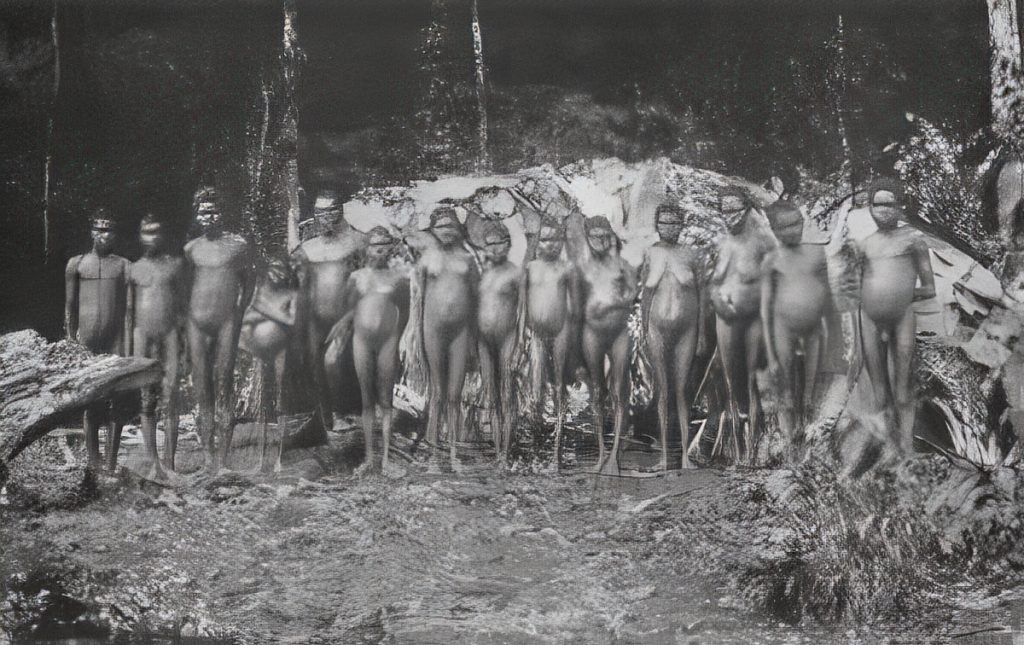REGIONAL VARIATIONS
Australia’s landscape varies from rainforests to deserts, from coastal and marine environments to an arid interior. Subsequent variations in vegetation and food resources have shaped the nature of Aboriginal culture, which varies throughout the continent.
In the well-watered northern and coastal regions, trees with stringy bark and fibrous roots provide fibres suitable for spinning into strong string and rope. In the arid interior, where such vegetation is lacking, strong ties (used on weaponry) are made from splitting tendons and sheaths from kangaroo’s legs and tails. Weaker and softer strings (used on body adornment) are made from certain grass stalks, human hair and animal fur.
Similarly, there are differences in women’s carrying utensils between coastal and arid regions. In the past, woven string bags were common in coastal areas, an open-mesh bag woven from split cane was used in northern Queensland, while women in Central Australia relied on a range of solid wooden coolamons to carry their items.
Women's Basketry
Similarly, there are differences in women’s carrying utensils between coastal and arid regions. In the past, woven string bags were common in coastal areas, an open-mesh bag woven from split cane was used in northern Queensland, while women in Central Australia relied on a range of solid wooden coolamons to carry their items.
Women carrying large woven baskets. 1928. Arnhem Land, Northern Territory.
(Photograph by Herbert Basedow, courtesy of the Mitchell Library, State Library of New South Wales.)
In addition to shaping variations in the nature of weaponry, utensils, tools and basketry, different environments throughout Australia have influenced the types of Ancestral Beings featuring in local religion. Thus, for example, deities connected with thunder, lightning and torrential rainfall are found in the tropical north, while people living in the arid interior of Australia have a range of desert animals with human qualities amongst their deities.
Photographs and details in the following section about Regional Variations relate to northern Queensland, and are from Seventeen Years Wandering Among the Aboriginals, first in the Australian Aboriginal Culture Series, associated with this website.
Other regional studies of Aboriginal culture have been published by David M. Welch in the Australian Aboriginal Culture Series. These contain important material written by early ethnographers who showed compassion and understanding for Aboriginal people and their culture. Their manuscripts have been combined with previously unpublished photographs and additional text to produce expanded, updated volumes with the following book titles:
- Kakadu People by Baldwin Spencer (based on 1912 diary notes) describes the culture of western Arnhem Land in the Northern Territory.
- Notes on some Native Tribes of Central Australia by Herbert Basedow is based on his 1903 expedition into Central Australia.
- Kimberley People: Stone age Bushmen of Today written by J. R. B. Love in 1936, provides a first-hand account of life with northern Kimberley Aborigines.
- Savage Life in Central Australia written by George Aiston and George Horne in 1924, is about the Dieri and Wangkangurru people of the Lake Eyre basin in the northern part of South Australia. The 2009 edition contains additional cultural information and legends from Aboriginal people in the region.
- The Arunta: A Study of a Stone Age People by Baldwin Spencer and F. J. Gillen, is based on their research amongst the Arunta (Aranda) tribe around Alice Springs in Central Australia, during the 1890s and early 1900s. To provide greater access to this seminal work, a facsimile edition was published in 2011.
Body Adornment
Everyday body adornments were mainly limited to waist belts and arm bands, used to carry items such as a stone knife, hatchet, or other small items. Similarly, any small lizard caught during the day could be tucked into the waist belt, leaving the hands free. More decorative items, such as necklaces and headdresses, were usually saved for wearing at ceremonial times.Aboriginal Ceremonial Decoration.
It was during ceremonial times that people painted their bodies with natural earth pigments – red and yellow ochres, white clay, and black charcoal. In many areas they also attached bird down, plant down (made from crushing certain flowers or seeds), or naturally occuring cotton to their body decoration.Men and boys with ceremonial body paint, prepared for a coroboree. The man at far left wears a headband with shell pendant over his forehead, nose bone, a large pearlshell pendant from his neck, and a European brass buckle belt. Other men wear nose bones and hold shields, spears, long sword-clubs and a boomerang.
Men and boys from Russell River, northern Queensland, decorated with vertical lines of parrot feather down. The younger boys have more extensive feather decoration on their upper bodies and heads. Two women kneel, undecorated, at the front of the group. Various designs are painted on the large rainforest shields. The large sword-clubs are used in ritualised fighting and ceremonies.
More About Body Adornment
Some Aboriginal Bush Foods – Insect, Animal and Plant Foods.
A wide range of plants and animals were eaten, and insect foods included certain ants, grubs and beetles, while streams provided fish and eels. Many birds were eaten, including waterfowl, scrub fowl, the Cassowary and the Jabiru. The yellow fat of the goanna (a large Australian lizard) was considered a delicacy.
More About Bush Foods
Tree Climbing to Obtain Food
People climbed trees to catch animals and reach native beehives for honey. Wax from the beehives was used to seal water containers, and as a resin when making weapons and for decoration. Throughout much of Australia, a small hatchet with a stone head was used to cut toe holds into trees to assist in climbing. In these photos, taken in rainforests, strong jungle vines are used like ropes to assist climbing trees in search of both animals and native bee hives’ wax and honey.
A man about to walk up a Eucalyptus tree. Cedar Creek.
More About Tree Climbing
Women’s Basketry
The range of containers here include the large baskets of woven cane from the rainforests, string bags made from string twisted from plant fibres, usually the bark of certain trees, and a water container made from folded bark and sealed with native bees wax resin.
Three women from Atherton outside their hut, making baskets. Although people have few possessions, every hut has these five main items; a grindstone, a bark water container, one of these large baskets, the large battle sword, and a large shield.
More About Women’s Basketry
Stone Tools and Grinding Stones
Grind stones about 2 feet (60cm) long and one foot (30 cm) wide are kept in every hut. When people move camp, they leave behind the heavy lower stone, but take the top stone with them. After a season, they will return to the area and use the same lower stone again.
Upper and lower grinding stones made from basalt, used to grind vegetable, nut and seed foods.
Cedar Creek, north Queensland.
More About Stone Tools
Spears, Wooden Tools and Weapons
The types of wooden artefacts used by Aborigines varied throughout Australia, and shown here are those for the region of coastal and northern Queensland.
A group of northern men and women with painted rainforest shields, long spears, boomerangs and large battle sword-clubs. The men have multiple horizontal cicatrices (scars) over their chests and abdomens. Some women wear necklaces. European clothing has been introduced.
Approx 1910. Northern Queensland.
More About Spears, Wooden Tools and Weapons
Aboriginal Housing
The type of housing people used depended on the available resources for building. In woodland, large trees have relatively soft stringybark which can be chopped away in sheets and used to make simple housing. In dense rainforests, palm fronds are numerous and these are used instead.
A group of aboriginal rainforest people.

